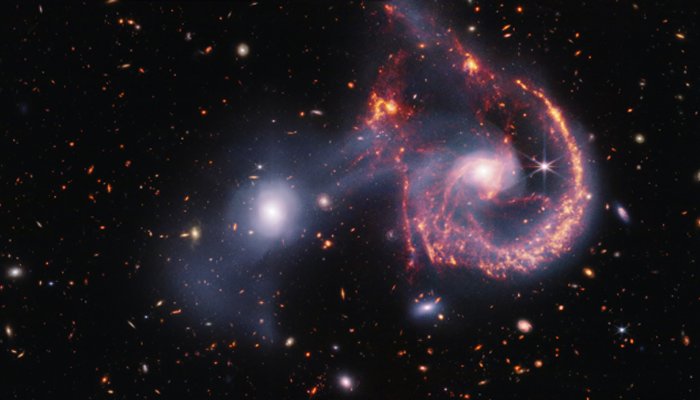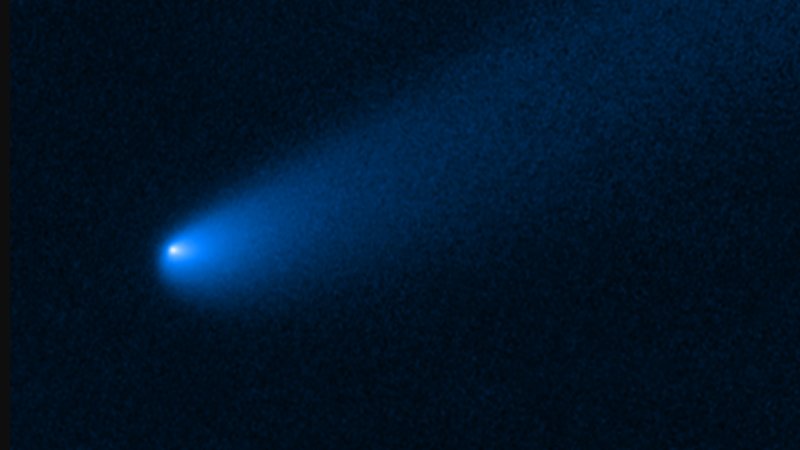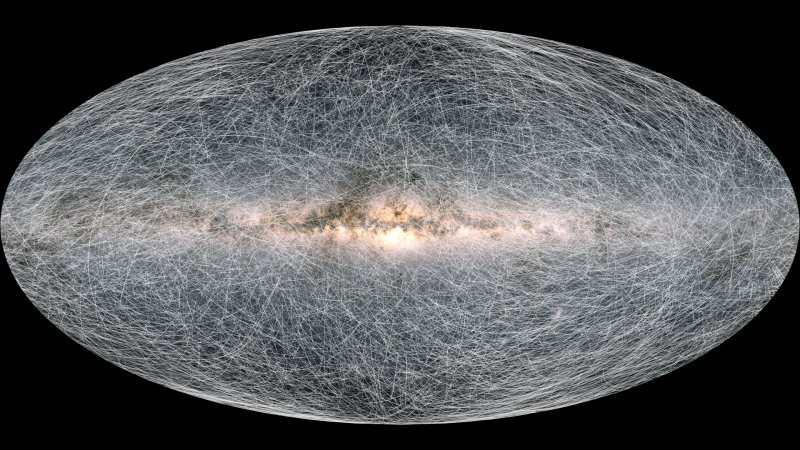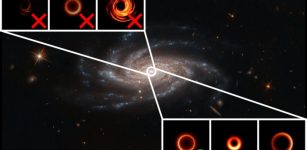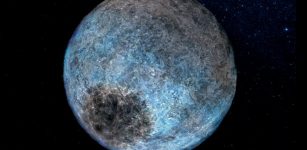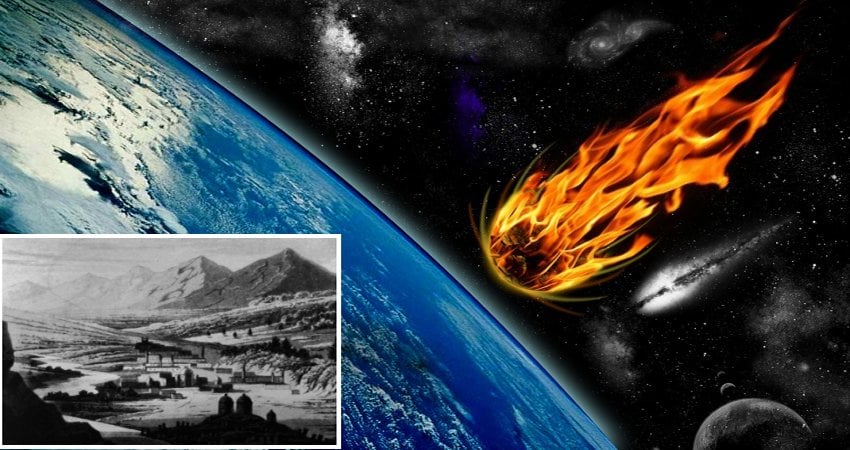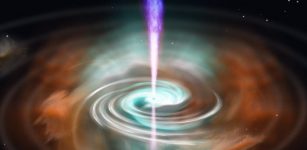Another Look Into Galactic Collisions
Eddie Gonzales Jr. – MessageToEagle.com – An interaction between an elliptical galaxy and a spiral galaxy, collectively known as Arp 107, seems to have given the spiral a happier outlook thanks to the two bright “eyes” and the wide semicircular “smile.”
This composite image of Arp 107 reveals a wealth of information about the star-formation and how these two galaxies collided hundreds of million years ago (full image below). Credits: NASA, ESA, CSA, STScI
NIRCam highlights the stars within both galaxies and reveals the connection between them: a transparent, white bridge of stars and gas pulled from both galaxies during their passage. MIRI data, represented in orange-red, shows star-forming regions and dust that is composed of soot-like organic molecules known as polycyclic aromatic hydrocarbons.
MIRI also provides a snapshot of the bright nucleus of the large spiral, home to a supermassive black hole.
The region has been observed before in infrared by NASA’s Spitzer Space Telescope in 2005, however NASA’s James Webb Space Telescope displays it in much higher resolution. This image is a composite, combining observations from Webb’s MIRI (Mid-Infrared Instrument) and NIRCam (Near-Infrared Camera).
The spiral galaxy is classified as a Seyfert galaxy, one of the two largest groups of active galaxies, along with galaxies that host quasars. Seyfert galaxies aren’t as luminous and distant as quasars, making them a more convenient way to study similar phenomena in lower energy light, like infrared.
This galaxy pair is similar to the Cartwheel Galaxy, one of the first interacting galaxies that Webb observed. Arp 107 may have turned out very similar in appearance to the Cartwheel, but since the smaller elliptical galaxy likely had an off-center collision instead of a direct hit, the spiral galaxy got away with only its spiral arms being disturbed.
The collision isn’t as bad as it sounds. Although there was star formation occurring before, collisions between galaxies can compress gas, improving the conditions needed for more stars to form. On the other hand, as Webb reveals, collisions also disperse a lot of gas, potentially depriving new stars of the material they need to form.
Webb has captured these galaxies in the process of merging, which will take hundreds of millions of years. As the two galaxies rebuild after the chaos of their collision, Arp 107 may lose its smile, but it will inevitably turn into something just as interesting for future astronomers to study.
Arp 107 is located 465 million light-years from Earth in the constellation Leo Minor.
Written by Eddie Gonzales Jr. – MessageToEagle.com Staff Writer

